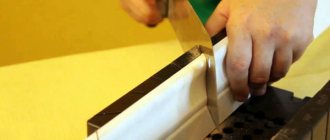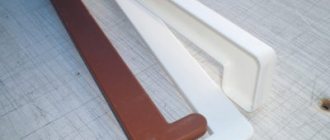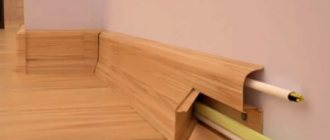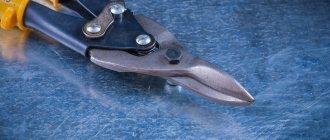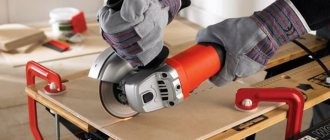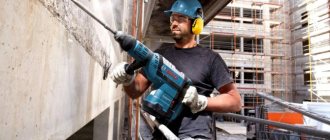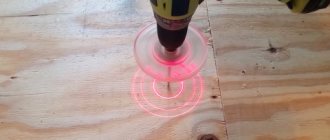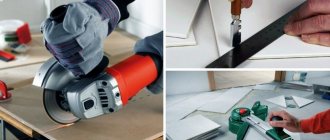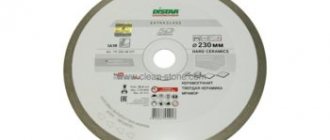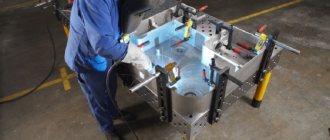How to attach plastic corners?
First, we note that before directly installing the plastic corners on the windows, it is necessary to cover the corners with wallpaper, paint, etc. That is, you can start attaching them only after all finishing work has been completed.
To install a plastic corner you will need the following tools:
- assembly adhesive (liquid nails)
- masking tape (scotch tape), and in a room with high humidity - silicone sealant
- metal scissors or hacksaw
- pencil
- directly PVC corners
Finishing windows with plastic corners consists of several stages .
Let's look at each of them:
What to attach to
The choice of method for attaching corners to protect the corners of walls depends on the material of the corner and on what surface they will be attached to. The most commonly used glue is glue. Moreover, “liquid nails” are among the leaders. This is a universal compound, but before purchasing, check that the specific brand can bond the materials you need.
You can put a corner on the glue if it is even, without large flaws. If there are holes/depressions, you are unlikely to glue it. In this case, you can use silicone. If you are gluing white corners, you can use white silicone. For colored ones it is better to take transparent ones. It is not advisable to use acidic everywhere. Although it is cheaper, it can damage metals or paint.
In both cases, the wall and corner must be clean and dry. The compound is applied to the corner, it is pressed against the corner, and fixed with strips of masking tape. We grab it after 40-60 cm. If everything is smooth, you can do it after 60 cm; if you need to repeat the shape, after 40 cm or even more often.
How and with what to glue a PVC corner to the wallpaper
Leave it in this state until the glue dries or the silicone hardens. See the packaging for the exact time. Then the masking tape can be removed. It differs from ordinary tape in that it comes off even from paper wallpaper without damaging the surface. But to be sure, try sticking and peeling in an inconspicuous place.
Foam rubber corner
How I glued plastic corners to the wall and windows.
There is another option for how to glue corners to a wall with wallpaper or paint. You can use double-sided tape. First glue it to the corner, then, after removing the protective coating, press it to the corner. There are corners to which the tape is already glued. Some types of foam rubber or plastic (usually flexible or universal).
Advantages and disadvantages
Of course, plastic corners have their pros and cons. It is worth taking a closer look at the advantages of these products:
- They perfectly hide the corner junctions of materials that are located on adjacent sections of the walls.
- They smooth out small surface imperfections well, creating an angle of ninety degrees.
- The service life is tens of years.
- Installation does not require special skills, you just need to ensure that the trim is calculated correctly.
- Wide choice of colors.
- Low cost, which distinguishes the products favorably from aluminum options.
Installation of corners allows you to hide unevenness and resulting joints.
We must not forget about the existing shortcomings:
- Possibility of damaging the material when cutting. The fact is that plastic is quite fragile; using the wrong technique or tools is a guarantee that the fragment will become unusable.
- Release of substances harmful to human health during combustion. In this regard, the material is not suitable for finishing evacuation areas.
Naturally, negative parameters depend on the specific use case.
Plastic corners are quite fragile material, so trimming must be done very carefully
Scope of use and additional information
The framing corner is made by hot bending a PVC sheet. The decorative element allows you to choose colors that will suit any interior. Application area:
- Window slope inside a house or apartment.
- As an external material to protect external or internal corners.
- Door or arched opening.
- To protect the corner of the wall when decorating with wallpaper.
- Protection of corners when finishing with plastic in the bathroom.
- Draping the joint when decorating external siding.
The plastic element is a good protector from mechanical stress, but, like any material, it has advantages and disadvantages:
- The installed corner is used as a finishing seam at the junction of finishing materials.
- Long service life - up to 25 years.
- Installation is carried out independently; you can glue the corner without prior preparation.
- The plastic element is easy to trim and comes in different colors.
- Acceptable price.
Why are plastic corners needed on slopes
? Among the disadvantages, the following turned out to be significant:
- Plastic is a fragile material, so it must be cut with special tools - cracks may appear.
- The flammable finishing element does not tolerate high temperatures.
How to Cut a Plastic Corner at 45 Degrees
During renovation work in premises, plinths play a decorative role and are the finishing touch of the design. They are also designed to close the gaps between different surfaces. Proper gluing of ceiling and floor plinths is an easy task, but a responsible one. In this regard, the issue of their installation becomes particularly important.
The photo shows the joining of skirting boards in the inner corner of the room.
Floor plinths are available in a very wide range of products:
- Made of foamed PVC, plastic , produced with cable channels for laying wiring and in their absence.
- Made of wood , made from different wood species, solid, in other words laminated; Installing a wooden plinth is no different from installing plastic fillets.
- Iron, iron and duralumin , with cable channels and flat.
Included with plastic or iron products are various connections and endings that make installation easy. Therefore, in fact, there is never a question of what actually is, how to cut plastic skirting boards at the joints. Wood lacks such connecting parts. They need to be cut for a perfect connection.
Fundamentally. Before installation, wooden fillets must be kept in the room for which they are intended for more than a day. Just like any wooden product, it must adapt to temperature and humidity.
At work we will need the following:
- miter box;
- a hacksaw with a small tooth;
- sandpaper.
Let's look at how the pruning process is carried out.
To connect planks when going around corners, the question is how to cut the baseboard at 45 degrees? This is painfully simple to do, but it is better to have a special device called a miter box.
SLOPE 5 min. How to glue a plastic corner on slopes and outer corners of walls. Angle Plastic Video
It doesn’t matter whether you buy a professional tool made of metal or more ordinary versions of plastic or wooden devices; they will help you do this work in a makeshift environment without unnecessary problems.
In this case, the cost of a professional device is justified if you often have to do such work. For small volumes, you can limit yourself to more ordinary and cheap variations.
Types of protective corners: from what materials
According to the area of application, corners are available for external (outdoor) and internal use. For now, let's talk about how to protect corners in an apartment and a house - indoors. Let's start with the materials. Corners for protecting wall corners can be:
- Made of plastic (PVC). Different colors, textures, there are even transparent ones.
- Made of metal. Brass, aluminum (polished and not), stainless steel, with or without painting.
- Wooden. Made from different types of wood, smooth, with relief.
The corner on the arch is covered with a flexible plastic corner
Cork corners to protect corners
Types, sizes
Plastic corners are produced in different types and sizes, each of which is designed for installation in a specific location:
Corner L
It has a wider application in comparison with others, thanks to its two subtypes: starter and universal. Such a profile is usually designed to hide gaps where different materials join together, as well as to create an edge when using sheet finishing materials and in corner joints.
U-profile
It makes sense to install the slopes at the initial stage. It is intended for framing and decorating slopes, protecting external corners from deformation and hiding gaps between loosely fastened panels.
F-profile
Due to the special jumper, it can be easily attached to the end sides of PVC panels, even without glue. Its functionality lies in the fact that it can be easily dismantled temporarily, for example, to re-glue wallpaper. Its main role is to close the joint between the panels and the wall, as well as to decorate openings and act as a platband framing a window or door around the perimeter.
T-shaped corner profile
It is the best option for creating the effect of a uniform transition between two different finishing materials. It is easy to attach to any material. For example, they are used to simplify the process of laying ceramic tiles on the floor, where they perform the function of improving the unevenness of the tile when it comes into contact with a flat surface of the floor or wall.
Often, the angle between the sides of products, which are produced in size increments of 5 millimeters and the length of these sides from 10x10 to 50x50 mm, is 90 degrees. They are usually used in the design of door and window slopes.
Varieties by type of finish
PVC corners differ from each other and the type of finishing work for which they are intended. They are internal and external. The angle for external ones can be 90 or 105 degrees.
Where should you not use a turned 45° angle?
This type of corner becomes quite fragile due to the thinned (narrowed) edge of the tile, so it is undesirable to use it when facing steps. In the place of the greatest traffic, the tile will definitely come off, the corner will be chipped - it’s only a matter of time.
READ How to trim laminate flooring in a doorway
The steps are laid with the top tile overlapping the end tile (on the riser) or using aluminum corners/profiles.
And in general, before making such angles, think carefully about everything. If there is a big threat of hitting and knocking down a given corner, then most likely this is not your option. In this case, you can try using an aluminum corner (but not a plastic one ).
Electric tile cutter
An electric tile cutter, or as tilers also call it, a wet cutter. It has a water-cooled disk, and the same water extinguishes all possible dust. The tile cutter cuts along one clear, fixed path and minimizes the human factor such as hand trembling, etc.
The tile cutter has two working positions - a straight cut and a cut at an angle of 45° (in fact, you can set any angle from 0 to 45°, but this most often makes no sense).
Preparation of plastic corners
- Place the corner against the desired wall and mark its overall dimensions with a pencil. In this case, you should start by marking the top corner, then from the sides, and then proceed to the bottom. This way you will reduce the likelihood of making mistakes when marking.
- After marking, carefully cut the material using a knife or metal scissors. In this case, the inner sides of the corner are cut at an angle of 90º, and the outer sides at an angle of 45º. The corners must be absolutely straight with equal widths of the sides. If there is excess left at the corner itself, then cut it off with your hacksaw.
After this, the corners are considered ready for installation, and we can begin this process.
Installation of corners on window or door slopes
Having figured out what such products are made of, what their features are and having decided on the choice, you should learn how to install corners on slopes. Detailed instructions are given below.
What glue to use
In addition to the corners themselves, we will also need an adhesive composition with which we will attach the selected element. When choosing it, it is worth remembering that quite often, especially if it is necessary to glue a narrow product, the glue seeps out from under it and, naturally, ends up on the walls. As a result, the latter may be damaged, which, accordingly, will negatively affect the appearance of the room as a whole. Therefore, you should choose an adhesive composition whose excess can be removed from the surface.
Basically, corners are glued to new slopes, but nevertheless, check that the surface is relatively flat, since large bumps cannot be hidden by any decoration. It should be free of foreign objects such as nails, screws, etc. It also needs to be degreased; white spirit is suitable for this purpose.
How to cut correctly
Before discussing how to attach corners to slopes, you should find out how to cut them correctly. After all, this stage is the most labor-intensive and, perhaps, even the most important, since it determines how closely their edges will be joined, and this directly affects the aesthetic appearance of the entire room. It is best to trim with a fine-tooth hacksaw. First you need to measure the length of the opening, then put marks on the corner itself so that the segment corresponds to this parameter. Then we cut off the part that will be adjacent directly to the slope strictly according to the marks, and the part that will be adjacent to the wall at an angle of 45°.
To trim the corner, use a fine-toothed hacksaw
How to glue
Finally, we got to the main question, how to glue the corners onto the slopes. However, before proceeding directly to fixation, you should carry out, so to speak, fitting. Once you are sure that everything is trimmed correctly, you can move on. We apply an adhesive solution to the inside of the corner, at the junction of the sides, in increments of approximately 10 cm. At this stage, a mounting gun will be an indispensable assistant. After this, we quickly press the product to the surface and fix it in this position with masking tape. You should start with a horizontal slope, and then proceed to the side slopes. We remove excess sealant from the surface of the walls with a damp cloth and let it dry thoroughly. You can remove the tape only after 24 hours.
How to glue a plastic corner
To glue plastic corners to wallpaper or slopes, you should take into account the surface to which the plates will be attached. Corners can be glued to wallpaper in two ways:
- Directly to wallpaper. Important: the wallpaper texture should be shallow, otherwise dust will accumulate in the resulting gaps.
- With cutting out the strip and applying glue to the wall. To do this, you need to place a plastic corner on the installation site, and then cut off the wallpaper on both sides with a knife.
If there are curved slopes, flexible PVC profiles will be useful.
How to cut correctly
Before gluing the corner, the required length is measured. Trimming at an angle of 45 degrees is carried out using a sharp scalpel knife or hacksaw. Blanks are also made using a miter box.
How to glue
If you need to attach plastic corners to the wallpaper, first the area to be treated is freed from the finishing material. The width of the cut strips should be slightly less than the width of the profile. Next we work like this:
- Apply the selected glue to the inside of the plank;
- We apply the polyvinyl chloride profile to the surface and press it along its entire length using a napkin or dry rag;
- We secure the plastic with masking tape;
- After the glue has set, remove the tape.
Before gluing the PVC profile to the windows or doorway, it is necessary to examine the surface for any unevenness. If it is not possible to correct the defect, use flexible plastic panels.
When it is necessary to glue the corners between the wall and the bathtub, it is important that the surface of the bathtub edge that is adjacent to the wall is clean. To protect the tiles from possible glue getting on them, you can use masking tape.
First, treat the side of the bathtub and the adjacent section of the wall with an antiseptic and degreaser. The next step is filling the cracks with silicone sealant. The PVC corner is glued after a day or two.
How to glue the inner corner to the ceiling? When fixing products, it is important to avoid the formation of gaps. If adhesive has come out, it should be removed. After installing the PVC profile, finishing putty is used.
Preparing for work
Before attaching the plastic corner to the work areas, they are freed from dust particles and construction contaminants. If there are protruding parts, remove and level the surface, otherwise the profile will lie crooked.
For work you need to prepare the following devices and tools:
- glue gun;
- roulette;
- construction knife;
- masking tape;
- square, preferably made of metal;
- miter box (you can do without it).
Clean and dry surfaces to be bonded are degreased with any solvent.
It is important to correctly measure the window slopes and prepare the finishing material. The basis should be one of the sides of the corner, which is cut off from the outside with a margin of 20 mm, this applies to the vertical, upper parts, taking into account both sides. All parts must consist of one whole segment; connections are not allowed.
External corners are joined in the following ways:
- overlapping each other, then leveled with putty to match the color of the plastic;
- cutting at an angle of 45°;
- by cutting one of the allowances to the base (the top one remains with a margin, and the vertical ones are cut flush).
It is advisable to check the accuracy of the cut elements by joining the parts. Cut with a special knife, otherwise the material may be damaged.
Conclusion
In our case, of course, the most correct solution would be to use masking tape. With its help you will need to fix the corner. The adhesive tape must be removed the next day, provided that the glue has completely dried. By the way, many people wonder: how to bend a corner. In fact, in arched structures this is not required, since it is soft enough and will itself take on the contours of the arch (if they are not too sharp, of course).
In cases where the angle of the working surface is quite sharp (for example, 45 degrees), or the radius of the arch is small, you can cut the plastic corner into several parts and secure each of them separately in the manner described above, carefully joining them.
Plastic, wood or MDF - which one to choose?
Having made sure that installing corners is not just a whim, but a necessity, we will study the construction market in order to make the right choice. These products are divided into types depending on the material from which they are made. So, the corner can be plastic, wood, beech, made of cork or MDF. Each type has its own pros and cons; let’s look at them more carefully.
Plastic corners are made by hot bending a sheet of polyvinyl chloride. Basically, they have similar shelf widths - from 10 to 40 mm in increments of 5 mm. But there are asymmetrical specimens, for example, 10x25 mm, but regardless of this parameter, the angle between the sides is 90 degrees. If you need to transform an arched opening, this is done using a special flexible profile. Their advantages include their relatively low price; they do not require painting, unlike the same wood.
The next view is cork corners. Such decorative elements are quite often used for arched skylights, but this does not mean that their use is limited only to this area. They can also be used to finish slopes of various shapes. Cork has a number of advantages, including strength, fire resistance, practicality and environmental friendliness. In principle, this material has virtually no disadvantages, except that if your pet wants to sharpen its claws on it, this will damage the surface.
It is also necessary to note wood and beech products, which will always be signs of excellent taste and will fit into any interior. In addition, we must not forget about their environmental friendliness. True, such elements are somewhat more expensive than their counterparts made from other materials, and besides, they often require painting. A material such as MDF can also be compared with natural wood, but it costs much less, because wood dust is used to create it.
READ How to Cut Fiberglass Reinforcement
How to process the ends
The last step to take is to sand the corners where the cuts are made with an emery block. You can use a grinder by installing a special grinding wheel on it. You can use an electric sander. The main thing is not to overdo it with the size of the chamfers. They should not be conspicuous; you just need to rid the edges of the curbs of sharp protrusions.
So, now you know how you can saw off a corner for a bathtub, no matter what material it is made of. Go for it, and you will succeed!
By: admin
Corners for protecting wall corners: selection options
Not everyone likes this design technique for wall corners - protective corners, but there are no particular alternatives. In any case, on walls covered with wallpaper, a corner is still better than sticking out and torn canvases.
There is only one solution available for the integrity of wallpaper without the use of decorative corners - to make a rounded angle rather than an acute one. In this case, there will be no problem with finishing it. You can simply roll up the wallpaper without cutting it. But you need to remove the corner completely; otherwise you will have to cut it , which means that the question of protecting the wallpaper joint at the corner will arise again.
It is important to choose the right decorative corner so that it does not look alien. There are special techniques for this.
The interior looks good in the appropriate style
You need to select corners to protect the corners of the walls based on the overall design of the room. There are several standard solutions:
To match the wall trim.
A complete color match is better, and even better if the texture is similar.
Or to match the wall trim, or to match the doors
One of the options, completely logical
In general, you need to select corners to protect the corners of the walls depending on the design of the room. This can be done after the furniture has been arranged and textiles have been hung. In this case, it is easier to imagine the final result. Because the picture in our head can be very different from reality.
READ How to Cut a Ceiling Skirting External Corner
If you just can’t find an acceptable color, but you need to protect the corners in your apartment, pay attention to the transparent plastic corners. They are of different types - rigid, flexible, with different wall widths.
